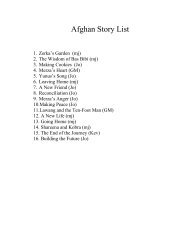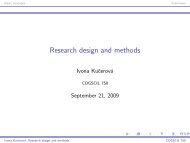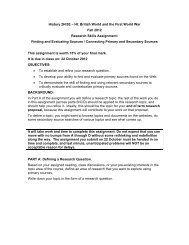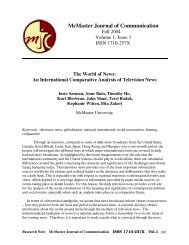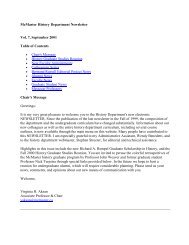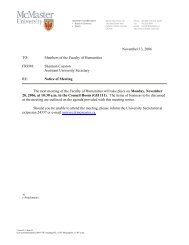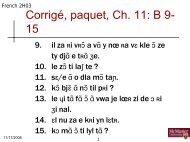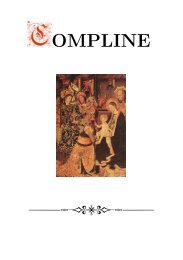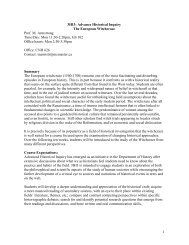Create successful ePaper yourself
Turn your PDF publications into a flip-book with our unique Google optimized e-Paper software.
296<br />
reviews<br />
early 1980s—the one-volume Everyman edition. Still, had I needed a<br />
class text, one existed, and still exists, in the Penguin Classics series.<br />
In other words, these Broadview editions are not supplying a bereft<br />
market so much as they are defining a niche within that market, each in<br />
its own way. Davis’s Robinson Crusoe does so quite powerfully. For those,<br />
like me, who teach Defoe’s novel on an almost-yearly basis, the prospect<br />
of adopting a new text is not one of unalloyed delight. My lectures are<br />
coded to the pagination of the two editions I have employed repeatedly.<br />
I have my favorite extra-textual materials, which I assign or supply depending<br />
on which classroom text I am using in the term in question. I<br />
rely on introductory statements that have become as familiar to me as<br />
the novel itself. All that said, the Broadview Robinson Crusoe should be<br />
a “classroom contender” for all who teach this novel. It will be for me.<br />
The appendices in this edition offer a panoply of contextualizing<br />
materials, from castaway narratives to meditations on solitude, from<br />
eighteenth-century economic theory to Defoe’s comments on slavery<br />
and trade, from classic texts on cannibalism to emotive illustrations of<br />
Friday’s rescue. Although the Broadview “context” philosophy seems<br />
in other instances geared to a placing of the text in a specific histor<br />
ical moment, the Robinson Crusoe materials helpfully extend the<br />
moment through Marx and Engels, Cruikshank and Phiz, Wordsworth<br />
and Coleridge. Such an extension is appropriate as this text hit a vital<br />
nerve that has yet to be calmed. I appreciate the inclusion of Charles<br />
Gildon’s wonderful send-up of Robinson Crusoe, but I also value the<br />
materials that will allow me to acknowledge Defoe’s signal achievement<br />
in creating an icon of modern sensibility—the lone survivor, who by<br />
force of will and intensity of faith manages to rebuild a shattered life<br />
that turns out to be even better than the life he lost. That he does so<br />
on the backs of unacknowledged and uncelebrated others is a fact that<br />
Defoe may not highlight, but it is also one he does not hide. The slave<br />
and the worker are inherent and indispensable appendages of the icon<br />
of the survivor, and this edition allows us to explore and interrogate that<br />
fact. We also have, in this edition, the introduction of a new context:<br />
an Arabic fable of island solitude by Ibn Tufayl, a work, according to<br />
Davis, often translated in Defoe’s time. Students eager to explore global<br />
reverberations will appreciate Davis’s deft discussion of the relationship<br />
between this fable and both the narrative of Alexander Selkirk and the<br />
Puritan diaries of Defoe’s time.<br />
The Bowers and Richetti edition also makes a powerful claim to our<br />
attention as it tackles a classroom problem—the length of Clarissa—<br />
with determination to produce a pedagogically manageable reading<br />
experience without sacrificing either the pleasures or the challenges<br />
of the original text. The abridgement that dominated the classroom<br />
ECF 25, no. 1 © 2012 McMaster University




